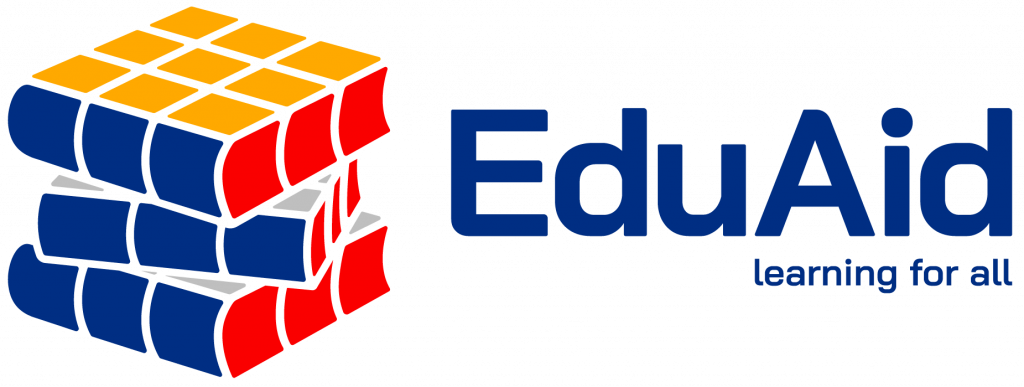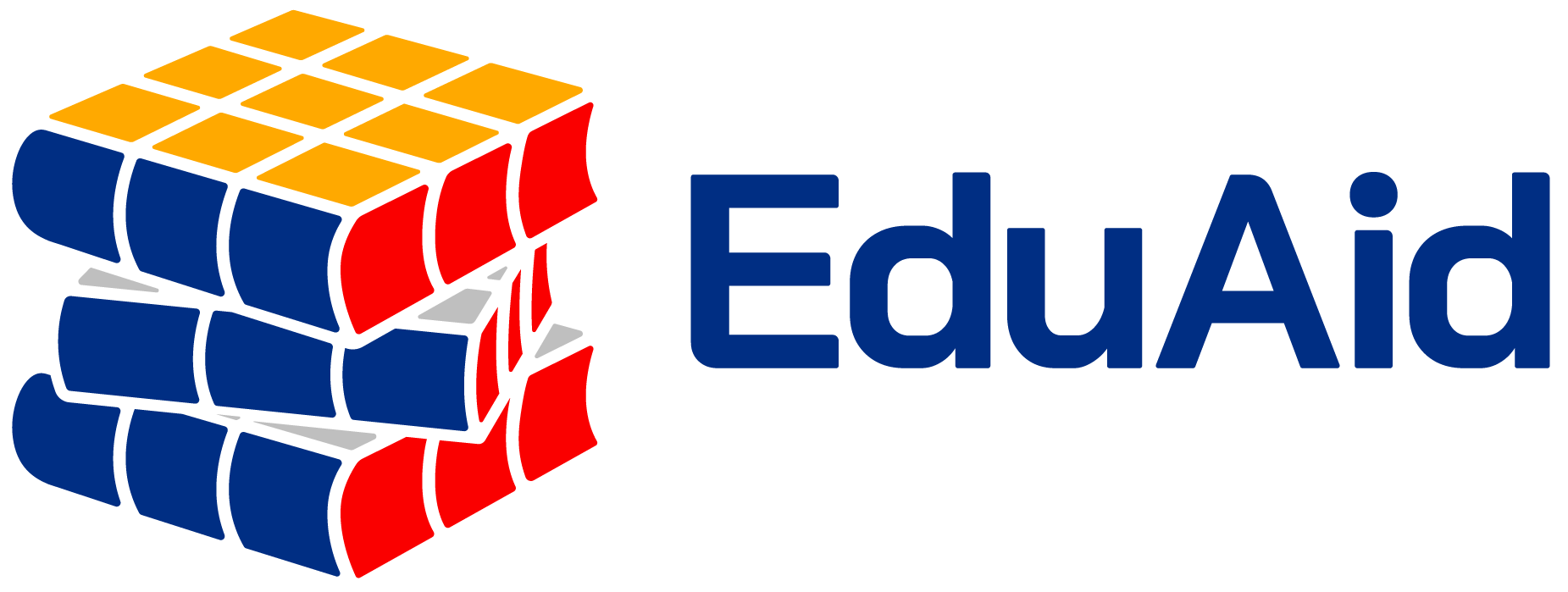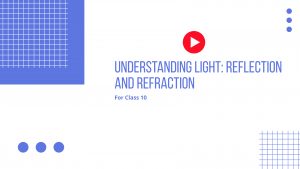NCERT Solutions for Science Class 10 Chapter 1
NCERT Solutions for Class 10 Chemistry Chapter 1 – “Chemical Reactions and Equations” is curated by senior and experienced teachers of EduAid. Before answering the questions of Chapter 1. This chapter delves into the fascinating world of chemical reactions, helping students understand and master the principles of balancing chemical equations and different types of reactions.
Here are the answers of the questions included in the NCERT book. Before diving deeep into the answers, try to attempt the questions by yourself.
Answer the Following Questions:
1. Why should a magnesium ribbon be cleaned before it is burnt in the air?
Answer: Magnesium is a very reactive metal. When stored, it reacts with oxygen to form a layer of magnesium oxide on its surface. This layer of magnesium oxide is quite stable and prevents further reaction of magnesium with oxygen. The magnesium ribbon is cleaned by sandpaper for removing this layer so that the underlying metal can be exposed to air.
2. Write the balanced equation for the following chemical reactions.
(i) \(Hydrogen + Chlorine → Hydrogen \space{chloride}\)
(ii) \(Barium \space{chloride} + Aluminium \space{sulphate} → Barium \space{sulphate} + Aluminium \space{chloride}\)
(iii) \(Sodium + Water → Sodium \space{hydroxide} + Hydrogen\)
Answer:
(i) \(H_2+ Cl_2\rightarrow2HCl\)
(ii) \(3BaCl_2(s) + Al_2(SO_4)_3(s)→ 3BaSO_4(s) + 2AlCl_3(s)\)
(iii) \(2Na(s)+2H_2O(l)→2NaOH(aq)+H_2(g)\)
3. Write a balanced chemical equation with state symbols for the following reactions.
(i) Solutions of barium chloride and sodium sulphate in water react to give insoluble barium sulphate and the solution of sodium chloride.
(ii) Sodium hydroxide solution (in water) reacts with hydrochloric acid solution (in water) to produce sodium chloride solution and water.
Answer:
(i) \(BaCl_2(aq) + Na_2SO_4(aq) → BaSO_4(s) + 2NaCl(aq)\)
(ii) \(NaOH(aq) + HCl(aq) → NaCl(aq) + H_2O(l)\)
4. A solution of a substance ‘X’ is used for whitewashing.
(i) Name the substance ‘X’ and write its formula.
(ii) Write the reaction of the substance ‘X’ named in (i) above with water.
Answer:
(i) The substance ‘X’ is calcium oxide. Its chemical formula is \(CaO\).
(ii) Calcium oxide reacts vigorously with water to form calcium hydroxide (slaked lime).
\(CaO(s)+H_2O(l)→Ca(OH)_2(aq)\)
\(Calcium \space{Oxide} \space{(Quick Lime)} + Water → Calcium \space{Hydroxide} (Slaked \space{Lime})\)
5. Why is the amount of gas collected in one of the test tubes in Activity 1.7 double of the amount collected in the other? Name this gas.Answer: Water contains two parts of hydrogen and one part oxygen. Therefore, during the electrolysis of water, the amount of hydrogen gas collected in one of the test tubes is double than that of the oxygen produced and collected in the other test tube.
6. Why does the colour of copper sulphate solution change when an iron nail is dipped in it?
Answer: When an iron nail dipped in the copper sulphate solution than iron displaces copper from the copper sulphate because iron is more reactive than copper. Therefore the color of the copper sulphate solution changes.
The reaction involved here is:
\(Fe(s)+CuSO_4(aq)→FeSO_4(aq)+Cu(s)\)
7. Give an example of a double displacement reaction other than the one given in Activity 1.10.
Answer:\(2KBr(aq) + BaI_2(aq) → 2KI(aq) + BaBr_2(aq)\)
8. Identify the substances that are oxidised and the substances that are reduced in the following reactions.
(i) \(4Na(s)+O_2(g)→2Na_2O(s)\)
(ii) \(CuO(s)+H_2(g)→Cu(s)+H_2O(l)\)
Answer:
(i) Sodium (\(Na)\) is oxidized as it gains oxygen and oxygen gets reduced.
(ii) \(Copper \space{oxide} (CuO) is \space{reduced}\space {to}\space {copper} (Cu) while hydrogen (H_2) gets oxidized to water (H_2O)\).
9. Which of the statements about the reaction below are incorrect?
\(2PbO(s)+C(s)→2Pb(s)+CO_2(g)\)
(a) Lead is getting reduced.
(b) Carbon dioxide is getting oxidised.
(c) Carbon is getting oxidised.
(d) Lead oxide is getting reduced.
(i) (a) and (b)
(ii) (a) and (c)
(iii) (a), (b) and (c)
(iv) all
Answer: (i) (a) and (b)
10. \(Fe_2O_3+2Al→Al_2O_3+2Fe\)
The above reaction is an example of a
(a) combination reaction.
(b) double displacement reaction.
(c) decomposition reaction.
(d) displacement reaction.
Answer: (d) displacement reaction.
11. What happens when dilute hydrochloric acid is added to iron filings? Tick the correct Answer.
(a) Hydrogen gas and iron chloride are produced.
(b) Chlorine gas and iron hydroxide are produced.
(c) No reaction takes place.
(d) Iron salt and water are produced.
Answer: (a) Hydrogen gas and iron chloride are produced.
12. What is a balanced chemical equation? Why should chemical equations be balanced?
Answer: A reaction which has an equal number of atoms of all the elements on both sides of the chemical equation is called a balanced chemical equation. Chemical reaction should be balanced to follow law of conservation of mass.
13. Translate the following statements into chemical equations and then balance them.
(a) Hydrogen gas combines with nitrogen to form ammonia.
(b) Hydrogen sulphide gas burns in air to give water and sulphur dioxide.
(c) Barium chloride reacts with aluminium sulphate to give aluminium chloride and a precipitate of barium sulphate.
(d) Potassium metal reacts with water to give potassium hydroxide and hydrogen gas.
Answer:
a) \(3H_2(g)+N_2(g)→2NH_3(g)\)
b) \(2H_2S(g)+3O_2(g)→2H_2O(l)+2SO_2(g)\)
c) \(3BaCl_2(aq) + Al_2(SO4)_3(aq) → 2AlCl_3(aq) + 3BaSO_4(s)\)
d) \(2K(s) + 2H_2O(l) → 2KOH(aq) + H_2(g)\)
14. Balance the following chemical equations.
(i) \(HNO_3 + Ca(OH)_2 → Ca(NO_3)_2 + H_2O\)
(ii) \(NaOH + H_2SO_4 → Na_2SO_4 + H_2O\)
iii) \(NaCl + AgNO_3 → AgCl + NaNO_3\)
iv) \(BaCl_2 + H_2SO_4 → BaSO_4 + HCl\)
Answer:
i) \(2HNO_3 + Ca(OH)_2 → Ca(NO_3)_2 + 2H_2O\)
ii) \(2NaOH + H_2SO_4 → Na_2SO_4 + 2H_2O\)
iii) \(NaCl + AgNO_3 → AgCl + NaNO_3\)
iv) \(BaCl_2 + H_2SO_4 → BaSO_4 + 2HCl\)
15. Write the balanced chemical equations for the following reactions.
(a) \(Calcium\space hydroxide + Carbon\space dioxide → Calcium\space carbonate + Water\)
(b) \(Zinc + Silver\space nitrate → Zinc\space nitrate + Silver\)
(c) \(Aluminium + Copper\space chloride → Aluminium\space chloride + Copper\)
(d) \(Barium\space chloride + Potassium\space sulphate → Barium\space sulphate + Potassium\space chloride\)
Answer:
(a) \(Ca(OH)_2+CO_2→CaCO_3+H_2O\)
(b) \(Zn+2AgNO_3→Zn(NO_3)_2+2Ag\)
(c) \(2Al+3CuCl_2→2AlCl_3+3Cu\)
(d) \(BaCl_2+K_2SO_4→BaSO_4+2KCl\)
Study materials
- Refernce Books
- NCERT Solutions
- Syllabus







